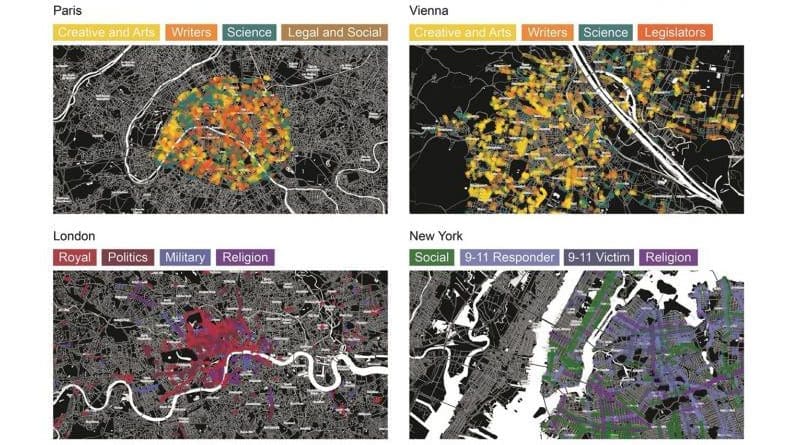Streetonomics: Using Street Names To Quantify A City’s Cultural Values
A city’s street names can provide a glimpse into its cultural value system and a way to quantify cultural indicators, according to a study published in the open-access journal PLOS ONE by Melanie Bancilhon from Washington University in Saint Louis, U.S., and colleagues.
Ever since named streets have existed, they have been used as a form of social engineering, mirroring a town or city’s social, cultural, political, and religious values. Building off this concept in what they term “streetonomics,” Bancilhon and colleagues used street names as an alternative route to quantify cultural indicators in four influential Western cities: Paris, Vienna, London, and New York.
The authors used multiple open data sources to study 4,932 honorific streets (streets named for a person) across the four cities. Their analysis examined gender bias in street name honorees; when the honorees lived compared to the present; the most celebrated professions for honorees; and whether foreigners were recognized as street name honorees.
Vienna had the highest proportion of its streets named to honor a woman, at 54 percent; London came a relatively close second, at 40 percent. In New York, only 26 percent of all streets are named after women, and in Paris this proportion is even lower, at only 4 percent. Most streets in Paris are named after people who lived in the 1860s, when urban planner Haussman worked with Napoleon III to transform Paris into the capital city of an empire. In Vienna, most of the street honorees lived through the 1900s, when the city was expanding and rebuilding after WWI. In London, streets are named mostly after people who lived through the 1700s and 1800s, following growth after the Great Fire of London and large-scale interventions promoted by King George III. In New York, most streets honor people who lived through the 1950s to 2000s, with 36 percent named specifically for 9/11 victims and emergency responders. In terms of the types of professions held by street honorees, Paris streets honor artists, writers, scientists, and members of the military; Viennese streets also honor artists, as well as members of legal and social occupations. London’s streets celebrate the British royal family, politicians, and military professionals predominantly, and New York’s streets have consistently celebrated artists, as well as many civil servants honored post-9/11. Vienna was the city with the most streets named after foreigners, at 45 percent, followed far behind by London (14.6 percent) Paris (10.9 percent), and New York (3.2 percent).
The authors note their study has several limitations–perhaps most importantly, the open source data sources used in the analysis are themselves potentially biased. However, the implications of using this type of open data to study urban culture and track changes over time are wide, and suggest many different avenues for future work.
The authors add: “A new text mining approach is able to automatically link streets to information about their honorees, and study how a city’s cultural values changed through space and time, revealing how intangible values encoded in street names such as gender biases evolved over the centuries.”

